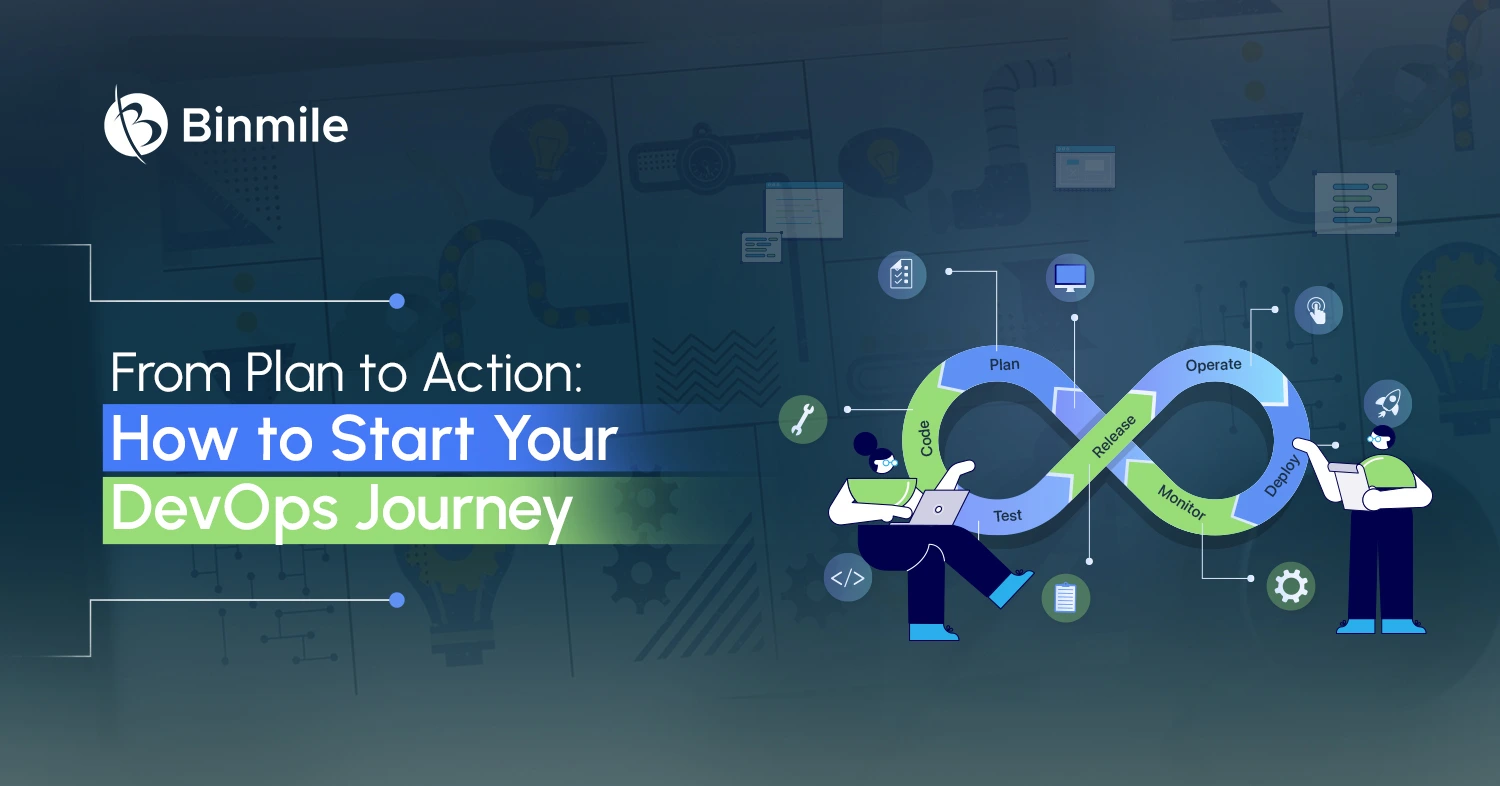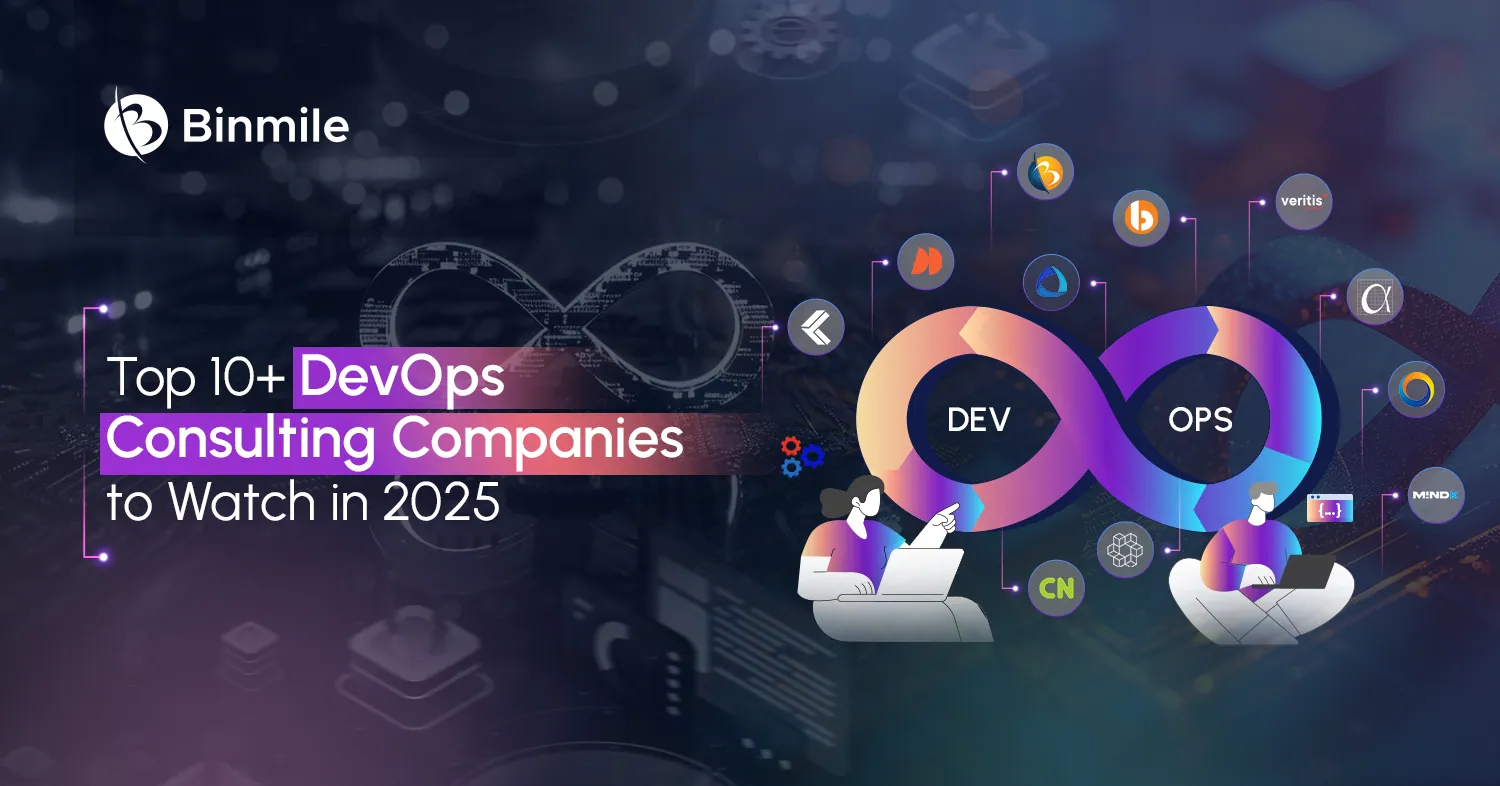DevOps implementation plan and its execution lead to a successful project completion unless you follow due protocols, strategies, or methodologies.
Here are our 4 most useful steps on how to plan and execute your ambitious DevOps project without technical hiccups.
#Step 1 DevOps Implementation Plan: Focus on Processes and Technologies with Team-Based Collaboration
Setting up a DevOps culture within an organization without an active collaboration of people is technically a counterfactual reality.
You must prioritize people or involve consistent communication and collaboration between the development and production teams.
Moreover, keep your stakeholders associated with the project’s development, operation, and deployment in the loop.
A role-based collaboration among teams will also induce the exchange of knowledge and exploration across the teams, thereby laying the bedrock for a highly productive and collaborative environment in your organization.
Things to Understand –
- DevOps follows the principle of meaningful and role-based collaboration among teams. Therefore, involve teams sharing common goals of your DevOps project.
- Apart from teams, processes, and technologies will help you succeed in your project, as they reduce SDLC time and promote seamless DevOps implementation.
- Partnering with a software development company could be fruitful, in terms of working with experienced partners to get a futuristic solution for your business.
- Ensure that the project’s goal and vision are aligned with clients and teams. For this, hold meetings with them, ensuring every participant understands the project’s goals and the visualization of the final product.
- Failure to ensure these steps in the first place would result in your ambitious project going haywire.
#Step 2 DevOps Implementation Plan: Initiate Development
This is a crucial step as the development process will ensure spearheading the vision and goal of your DevOps project to its successful outcome. From planning to coding, focus on communicating the idea and requirements of the project to stakeholders.
The development phase involves maintaining the project backlog according to customer feedback to ensure continuous software development through smaller releases.
To be involved in this DevOps implementation phase is at least one cybersecurity expert to validate the safety of the MVP, security-wise.
Things to Understand –
- DevOps development is the phase of materializing the vision and goal of your project
- Ensure that stakeholders are familiar with the idea and the project’s needs
- Maintain project backlog based on customer feedback to ensure continuous DevOps project development
- This stage must have structured workflows to ensure the project roadmap is in place
- Every team member must be aware of their roles and responsibilities in the project development
- To avoid workflow disruption, engage agile and multi-talented members willing to adapt to a new role and contribute their duties to the project development effectively
#Step 3 DevOps Implementation Plan: Continuous Integration, Continuous Delivery, and Deployment
In this crucial step of DevOps project development, changed or updated codes from multiple contributors are merged into a central repository.
Continuous integration (CI) also makes use of automated tools to validate the accuracy of the updated code. It ensures that the problems detected in smaller bits of code can be fixed before they cluster into a vast codebase of faulty data.
The next-in-line process is DevOps continuous delivery (CD) to automate software release processes. It involves the automatic preparation of code changes to a testing environment once the build stage is over.
Therefore, developers find it useful to automate testing to verify an app’s updates before being deployed.

#Step 4 DevOps Implementation Plan – Continuous Testing, Deployment, Monitoring, and Operations
Continuous Testing
It can either be done before CI or after that, based on the preference of development teams. During continuous testing in DevOps, the code is continuously tested for possible bugs or errors to finally ensure the delivery of high-quality software solutions.

It helps developers rule out QA teams to complete testing before the faulty code is fixed. Continuous testing ensures proactive fixes to code quality and security issues, in real-time.
Benefits:
- Speeds up software delivery to improve code quality
- Ensures seamless integration into DevOps processes
- Ensures rapid creation of agile and trusted processes
- Continuous feedback mechanism for faster time-to-market
- Breaks down departmental silos, and unites teams for better workflow efficiency
Continuous Deployment
In the DevOps lifecycle, CD/continuous deployment is very important. It is the process of releasing finished code to production servers through configuration management. Servers-related upgrades are also scheduled to ensure that configurations are maintained consistently.
Development teams ensure consistent deployment of DevOps projects to address any discovered security vulnerabilities faster. As a result, it pans out the maximum values of the product for customers.
Benefits:
- Automates iterative tasks, increase focus on key things
- Ensures frictionless deployment without compromising security
- Enables integration of tools and technologies into an agile workflow
- Enables integration of teams and processes with a unified pipeline
- Boosts overall productivity
Pro Tip: Hire one of the Best DevOps consulting companies to be served with an intuitive app with enhanced security features.
Continuous Monitoring
It is one of the most important DevOps practices to ensure that the app is without faults, in terms of non-reachable server or low memory. The goal is to make your app fully functional by detecting and correcting any security vulnerabilities automatically.
Benefits –
- Improved security, better network visibility, and transparency
- Enables timely alerts to security vulnerabilities or threats
- Allows quick system restoration back to best operational levels
- Reduces downtime, service outage, or alerts performance issues
Continuous Operations
This is the final DevOps implementation plan to ensure that the app doesn’t have to go through scheduled maintenance and other planned downtime. It mostly happens in the case when the server has to be turned off temporarily to carry out scheduled maintenance, like updates.
Benefits –
- Rules out server shutdown to execute scheduled maintenance
- Ensures uninterrupted app performance
- Automates required upgrades to rule out downtime
Best Practices for DevOps Implementation Plan
- Build a customer-centric solution
- Since DevOps workflow is iterative, every phase is continuous, like continuous testing, deployment, monitoring, operations, etc.
- Involve cross-team responsibilities to narrow the knowledge gap and improve productivity with delegated activities
- Set most process operations within the phase of the DevOps pipeline on automated mode without hampering the team’s performance
- DevOps as a service from a reliable DevOps partner could help get robust solutions for your business.
Getting Started with DevOps Product Development Success
The 4 most-useful steps for DevOps product development mentioned above will help any DevOps team to get started with a DevOps project, believing it is on the right trajectory and bound to be successful.
Building a futuristic solution based on DevOps implementation plans and best practices becomes frictionless when your development teams work with the most reputable DevOps services company that believes in fruitful collaboration and communication.
The importance of having the right team also matters in this regard, as it facilitates ease of transition throughout the DevOps project development stages.









